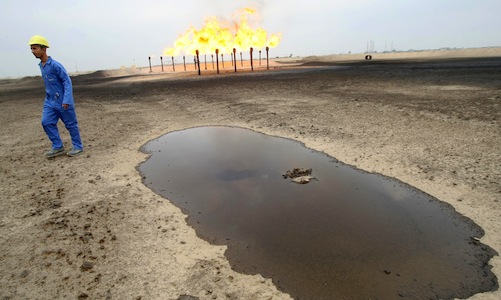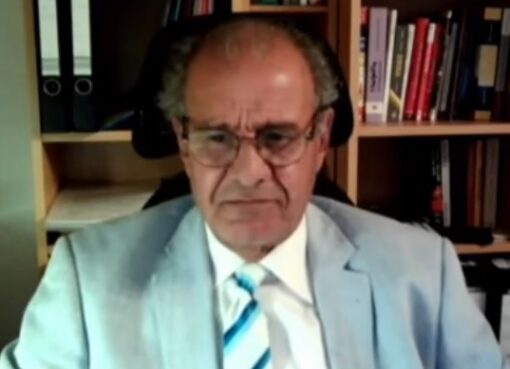This article discusses some of the main issues covered by IEA Iraq Energy Outlook 2012 and the challenges facing the Federal Hydrocarbon plans. In absence of long term strategy and planning by Iraq’s Ministry of Oil, the issues discussed here are guidelines for radical actions required to ensure flow of enough revenue from Oil and Gas exports to:
- Reconstruct and upgrade the country’s infrastructure
- Provide necessary services to the nation
- Rebuild the army and preserve stability and Iraq’s Unity
The role of INOC
The role of INOC in developing its experts and personnel, mentioned in the Outlook Report, played important role in building Iraq’s upstream oil sector through the years prior to the 1st Gulf war. Attempts to re-establish INOC or upgrade MoO to exercise even part of that role have not been made. The ministry continued to be inefficiently managed with:
- Modest capabilities of the central departments of MoO
- Modest capabilities of the National Operators, technical and management aspects
- Vacant post of Deputy Oil Minister for the Upstream Sector
- Slow progress of the Refining Industry and failure to build any refinery under investment package
- Dominant control exercised by the supervision of the Energy Deputy of the PM
- Ineffective Parliamentary Oil & Gas Committee
- Avoiding utilization of ex-MoO expertise
The Central Production Scenario
The outlook central scenario is:
2011 2015 2020 2025 2030 2035
Million b/d: 2.7 4.2 6.1 6.9 7.5 8.3
The Outlook Forecast includes 500-850 K b/d from Kurdistan starting in year 2020 but subject to shaky KRG-Federal Government relation bearing in mind the possibility of cessation of Kurdistan in the near future?
This scenario is in line with what the Author anticipated as attainable plateau (million b/d) in a presentation delivered in Oil & Money Forum of November 2010:
Operators Potential PPT Surplus capacity
Awarded IOCs 8 6 2
National 4.500 3.150 1.350
The production potential of fields under national operators can satisfy domestic demand (Refining & Industry) and provide some cushion for export in short spells of high world’s demands. There are no apparent plans by MoO to expand production from the concerned fields.
The water injection mega project
The Outlook Report acknowledges that 4 years from the start of FEED (expected to be completed by end 2013) will be needed to see the first phase of 2 million b/d commissioned. The delay will cause serious shortage of water that can’t be cured the way suggested by the report, surface or underground water as those two modest sources are highly required for agricultural usage.
The remedy is to compliment water injection by ESPs that are needed now and will be constantly needed to coup up with increasing water cuts in the produced oil.
It is noted here that the water injection rate in Rumaila Field is already way below the required amount, in addition to the corrosion of the injection system. Substandard water specs and poor monitoring are now serious concern that is beyond the capability of SOC to handle by itself. A service company is in real need to look after coordination between the users and ensure proper monitoring of the complete water injection network.
The surface installations
Bottlenecks in storage and transporting the crude oil are not being resolved in pace with crude oil availability from the fields:
- PS1, Tuba and Zb-1 tank farms have not seen expansion
- Zb-2 tank farm, part of IPSA, is still out of use without renovation to utilize it as part of the common storage facility in S Iraq
- Major changes are required to modify the current separation stations to allow handling high WC produced oil. The present limit is %25. This measure seems to be pending approval of the permanent field development plans of the awarded fields that will include water injection sourcing , transportation and handling produced formation water.
- The pipeline capacity to Fao, still limited by that of the two Basra- Fao landlines, have not seen a change
- The restoration of Fao as onshore storage facility is partially done. Solid pumping from the fields to the offshore terminal is being applied. There is no cushion for storage in case of rough weather and delays in sea loading the result of which is temporarily reducing the flow from the fields in such cases.
The export facilities
The closure of the Straits of Hormuz is still a disaster that may face Iraq’s oil exports in absence of alternatives:
- Recovery of the designed export capacity of the two Iraq-Turkish P/Line
- Recovery of the designed capacity of the Strategic Basra-Kirkuk P/Line plus constructing a second line
- Plan for the new Iraq-Jordan line is still on paper not forgetting the possibility of political instability hitting the country as result of major change in neighbouring Syria. Political risk East of Iraq threatens the export of gas from Iraq’s Western Desert too.
Dependence on Oil Income
Iraq is still dependent on oil as the main source of income. No effective measures have been taken to:
- Resolve disputes with neighbouring countries regarding Iraq’s water share from sources flowing to Iraq. The Administration has never used economic and trade pressures on Turkey and Iran.
- Adapt aggressive water and Irrigation policies to ensure conservation of local resources
Cost of projects and oilfield services
Project and services costs, already %50-%100 compared to the international prices, are already shooting higher and higher without effective interference from the MoO. There has been reports that well drilling and services are way above the %100 level in general. Well costs have registered cases with $26-100 million per new well in Kurdistan?
Other Challenges facing field development
The following are added challenges to the abovementioned:
- Gas network and utilization: Absence of strategy and long term planning for both associated and free gas
- The need for new technical recruitments/ contracts
- Immediate need for:
- Reforming and structuring the training facilities
- Applying criteria for selection of trainees and monitoring their personnel development
- Intensifying on job training ‘OJT’
- Arranging for Consulting Agreements with Ex-MoO Experts
- Legislative reform: Hydrocarbon Federal Law, INOC, MoO..etc
- Organizing effective Oil Quality Segregation and Crude marketing: share of each operator, capabilities of Somo to market all production
- Avoid mixing heavy and medium heavy crude oil of Kurdistan with Kirkuk crude, requiring introduction of Kurdistan Heavy as separate stream.
- Speed up completion of National Integrated Hydrocarbon plan and holding a conference accommodating Ex-MoO Experts for discussion of the plan and conclude final recommendations
- The tribal threat in W Qurna and Mdaina District: Local tribes are enforcing their own conditions on IOCs and contractors to employ their unskilled people. Current influence in W Qurna seems to be spreading to other areas, may affect activities in Majnoon, Ben Umer and Halfaya Fields’ at present and in future.
………………………………………………………………………………………………………………………………………………
*Previous positions in Iraq held by the Author:
Head of Petroleum Engineering, SOC of INOC
Fields General Manager, NOC
Founder of Central Petroleum Organisation of INOC and Iraq Drilling Company
Board Member of INOC
G Manager of Planning of MoO








Comment here